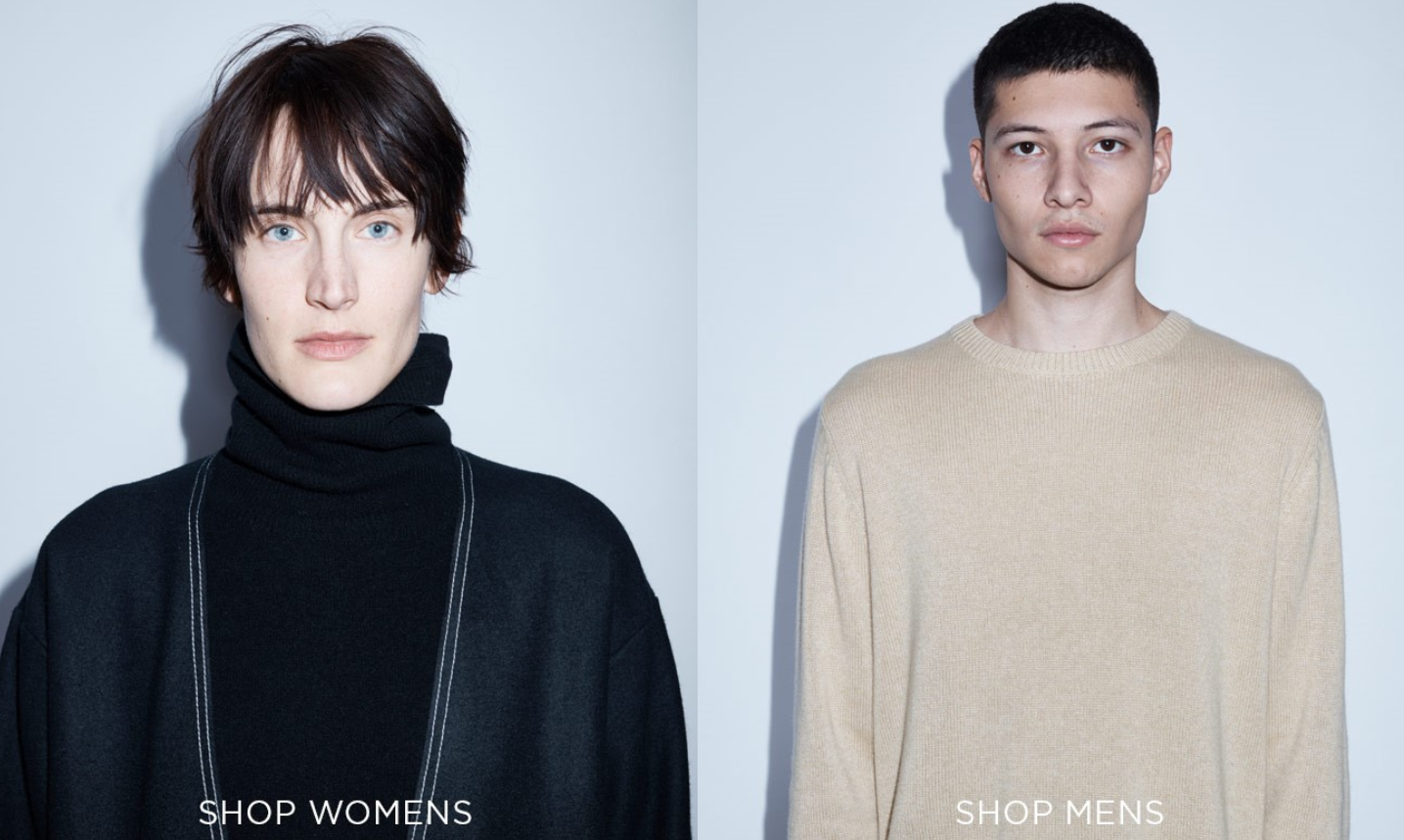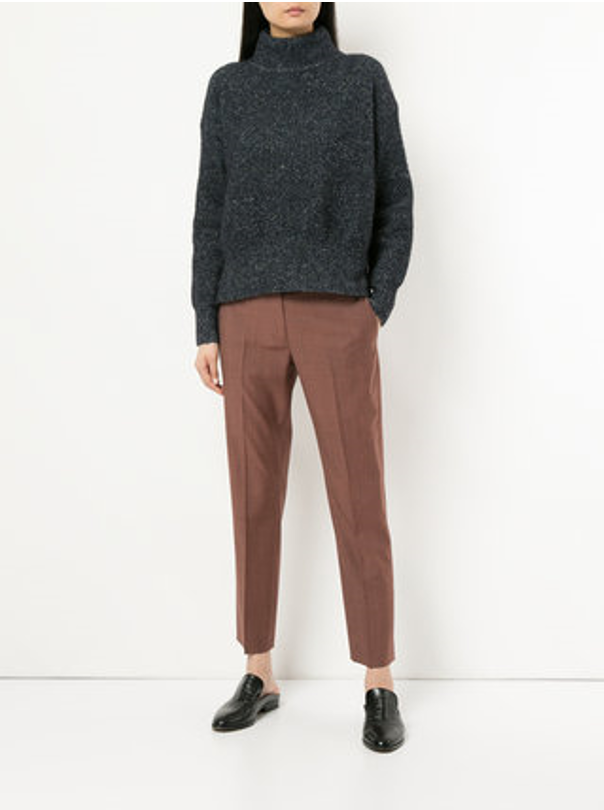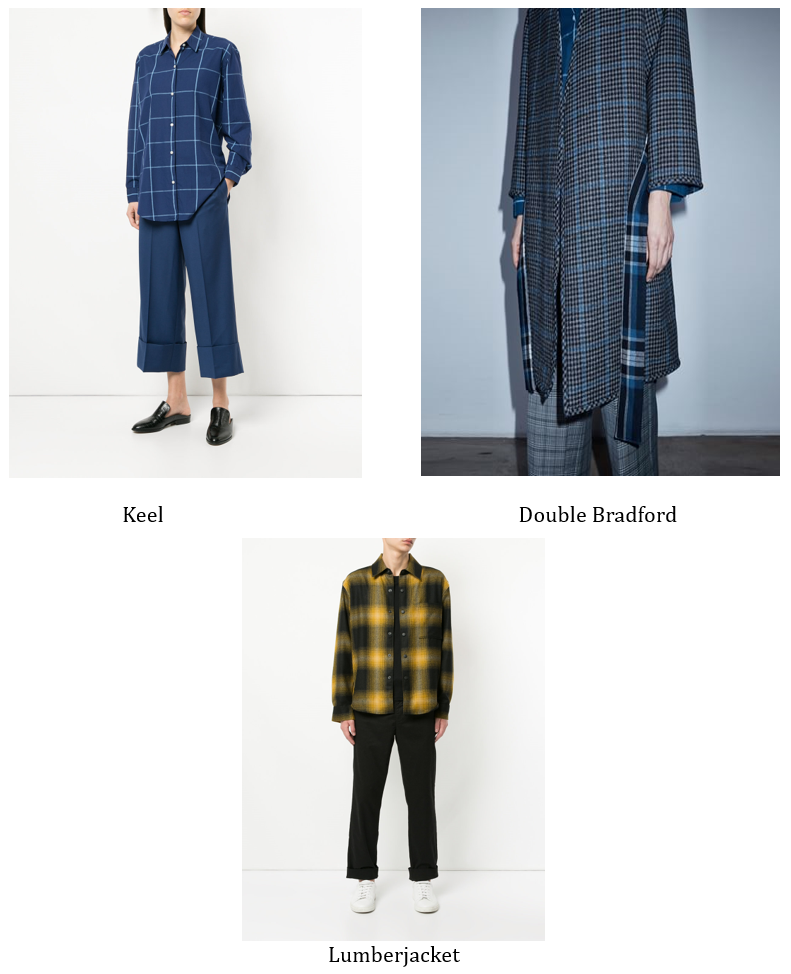
Temperatures are finally dropping across Australia, and fashion studio Jac + Jack couldn't be happier. Their 2018 fall and winter line re-emphasises the brand's taste for, and commitment to, (mostly) knitted garments that look and feel at home even at work, out for dinner, out for lunch/coffee, going for a walk, or just actually at home.
The company has steadily expanded its range of products and distribution since its inception in 2004. Founded by Jacqueline (Jac) Hunt and Lisa (Jack) Dempsey, who bonded over a shared feeling that Australian attire lacked the textures they had both come to love through their travels and international work experiences. Their primary concern was the absence of knitwear; this spark continues to motivate their designs and distinguish them from other contemporary design brands. Knitting is an intimate act, and the clothes reflect this intimacy by expressly favoring personal comfort over the more overt patterns, colours, and contours of some other contemporary studios.
What is initially striking about Jac + Jack's clothing, and especially prominent in the Fall/Winter 2018 line, is the shape of the garments. For each type of article, certain components (pockets, collars, cuffs, patterns) have been preserved, while others (any of the above depending on the garment, as well as any external hem-lines) are replaced by a flowing landscape of fabric.
The Shue coat brings the pockets and collar to the forefront, leaving behind any buttons, folds, or vents. The distance between top and bottom is emphasized by the gradually tapering collar. When viewed moving upwards, its emerging presence culminates in the only non-vertical/horizontal portion of the coat, which complements the chin and head's rotundity.
This minimalism also brings to immediate attention the materials used. In the coat above, the felted wool unifies and elongates the form. In others, especially sweaters, the knitting gives depth to the material and colour. The winter colour palette is well-defined; muted darks contrasted with soft pastels and creams. Overwear textures and colours define the garment as an exterior, while the shirts and sweaters' surfaces move inward.

The Gabe sweater takes a different approach than the Shue coat to colour and texture; complicating the particular qualities of both qualities increases its dimensionality . Yet despite the clear textural differences from the Shue, the elemental (collar, slightly tapered sleeve) and formal (straight-cut torso) minimalism makes it clear that both were designed by the same minds.
The generally deepened colours of the Fall/Winter collection are not unlike Jac + Jack's typical palettes. There are, however, notable series of exceptions to the monochrome, exceptions that reflect the designers' penchant for experimentation and playfulness. Phases are directed by the environment (holidays, weather) as well as their own whims. Several items in early 2018 revolved around checked patterns, highlighting the variety to which they can be employed. Viewing several in succession demonstrates again the different motions and connotations that can be conveyed by slight (or dramatic) changes on the same design.

To begin with, the Keel checked shirt is the most formal of the collection. It is the most solid of them as well, employing a high contrast, two-toned blue surface, reminiscent of the Shue coat in its veneer. The buttons feature more prominently than in the others; they stand out as the only unbalanced (and not blue-hued) feature of the shirt. Spacing them differently from the checks--they align only briefly and then move further away from them--creates a single, static line that interrupts the otherwise consistent pattern. The extended front and back, as well as the tapered sleeves, give credence to the brand's openness to more radical contemporary fashion trends, but the Keel shirt only toys with the overt insouciance of more 'street style' brands by using it with such an otherwise clearly defined pattern.
In terms of the emphasis on surface, the Keel is most similar to the micro-checked side of the reversible Double Bradford coat. The larger, light blue checks prevent it from reaching gingham territory. Buttonless and therefore always slightly opened, it is cut to tend towards leaning inwards. This arches the squares away from the centre, and mirrors the deep v-cut on the upper torso. The straight, shortened sleeve allows for personalization via layering, but it mostly serves in contrast to the lengthy, expanding bottom portion. As in the Bradford, the length of the garment is flaunted by these tendencies towards verticality. The typically strong green and purple contrast is reduced by a slight muting of the colors, as well as the prominence of the individual and overall shape of the coat. The larger, mint green checks converge towards the centre, while the small, more monochrome patterns inside keep it from collapsing in on itself.
The yellow checked (lumber)jacket uses its colour contrast very differently. The large, black and yellow squares are blended together, so that the pattern is based on blending just as much as juxtaposition. The front shows three horizontal black stripes and two vertical yellows; combined with a straight and relatively short cut, this orients the shirt much more horizontally than the Bradford. Again, of course, this dichotomy is complicated by exploring the potentialities of melding colours. The black and yellow checks become a complex shade of yellow-grey, but they contrast more starkly with the (more) solid yellow than the ash black. This contrast, as well as a slightly extended collar, creates a downward movement that contrasts the traditional black-striped shirt.
Clearly, there is a surprising surfeit of combination and innovation coming from the current and past products made by Jac + Jack. On the internet, they can be purchased at the designers' own website, as well as David Jones and several other retailers, depending on your location. Preferably, they also have six beautiful showrooms: they can be found in Claremont, two in Melbourne, and three in the Sydney area. As to be expected, they are arranged in colour gradients, allowing you to refine and expand your own sensibilities, taking comfort in knowing that every element (shape, texture, colour, prominent features) of each garment has been included to create a cohesive article that is also surprisingly disruptive on close examination.